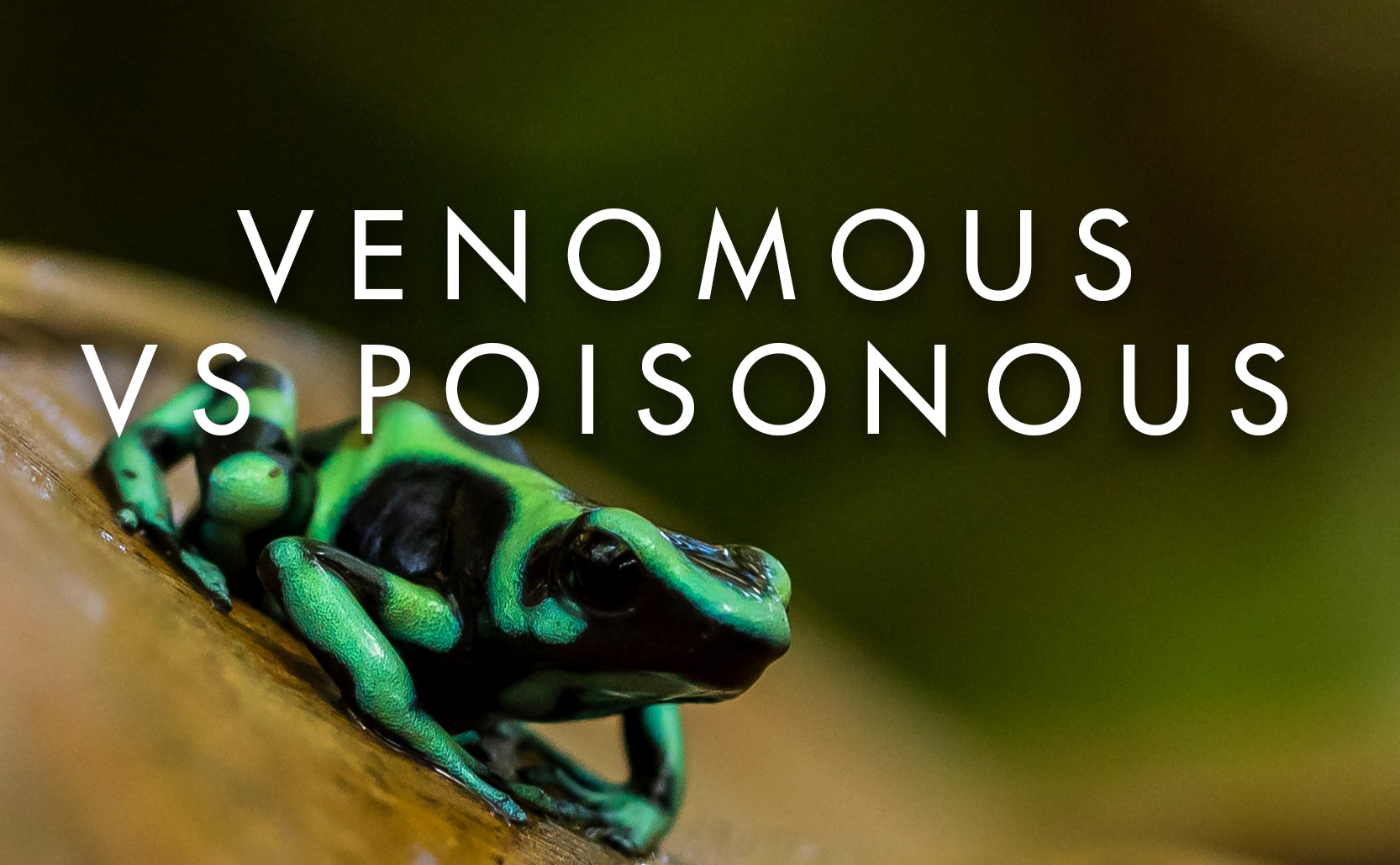Venomous vs Poisonous
Venomous species are aggressively toxic while poisonous species are defensively toxic.
The difference between venomous and poisonous is a difference of evolutionary strategies. It’s a difference of offense vs. defense, actively toxic vs. passively toxic.
Venomous
Venomous species use an active strategy to inflict toxins. As such they always have some sort of toxin delivery system such as fangs, barbs, stingers, spurs, etc. as a way to inject their venom. They are predators that use venom to incapacitate their prey.
Poisonous
Poisonous species defensively pass on their toxins when they are touched or eaten. This passive approach is why toxic plants are categorized as poisonous because, well, most plants don’t actively move around trying to attack prey.
As for poisonous animals the poison is frequently secreted through their skin as in the case of the poison dart frog (who got their name because their poison was sometimes used by indigenous tribes of Central/South America to make poisonous blow darts).
Poisonous species use their toxin to deter predation. Sometimes a predator only needs to be poisoned once to learn to never attack that poisonous species again. For others, a particular poison doesn’t leave the predator with the option of a second attack as the result is death.
In Short:
- Venomous: when something toxic bites/touches you
- Poisonous: when you bite/touch something that is toxic
Added info: While generally mutually exclusive, there are a few species that are both venomous and poisonous. One example is the Tiger Keelback snake of East Asia. It has fangs to inject toxin but more frequently it employs a defensive strategy and stores toxin in nuchal glands. Any predator that bites into the snake’s neck will be poisoned. The toxin they use for either strategy is not produced by the snake, but rather it’s acquired by eating poisonous toads.



